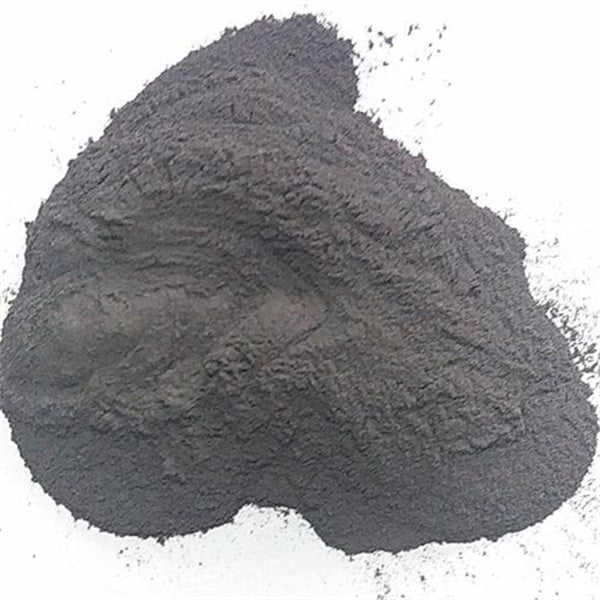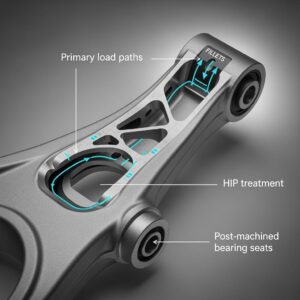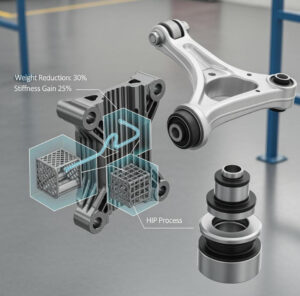Inconel 625 poeder: Inleiding, Toepassingen
Inhoudsopgave
Inconel 625 is een nikkel-chroom-molybdeenlegering die veel wordt gebruikt vanwege de uitstekende corrosie- en oxidatiebestendigheid bij hoge temperaturen. Inconel 625 poeder maakt het mogelijk om componenten uit deze legering te vervaardigen met behulp van geavanceerde poedermetallurgietechnieken.
Deze gids behandelt de samenstelling, eigenschappen, productiemethoden, deeltjeskenmerken, toepassingen, voordelen, beperkingen, prijzen en vergelijkingen met alternatieve legeringen van Inconel 625-poeder.
Inleiding tot Inconel 625-poeder
Inconel 625-poeder heeft de volgende hoofdkenmerken:
- Gemaakt van nikkel-chroom-molybdeenlegering
- Bevat Ni-Nb versterkende precipitaten
- Uitstekende corrosieweerstand
- Hoge sterkte en taaiheid
- Stabiel bij temperaturen tot 980°C
- Verkrijgbaar in verschillende maatverdelingen
- Wordt voornamelijk gebruikt voor additieve productie
- Ook geschikt voor MIM, thermisch spuiten, lassen
De eigenschappen van Inconel 625 maken het zeer geschikt voor onderdelen die worden blootgesteld aan extreme omgevingen. De poedervorm maakt het mogelijk om complexe geometrieën te produceren met behulp van geavanceerde methoden.

Typische samenstelling van Inconel 625 Poeder
De nominale samenstelling van Inconel 625 poeder is:
Inconel 625 poedersamenstelling
| Element | Gewicht % |
|---|---|
| Nikkel | 58.0 min |
| Chroom | 20.0-23.0 |
| Molybdeen | 8.0-10.0 |
| Niobium | 3.15-4.15 |
| Ijzer | 5,0 max |
| Kobalt | 1,0 max |
| Aluminium | 0,4 max |
| Titanium | 0,4 max |
| Koolstof | 0,1 max |
- Nikkel zorgt voor corrosiebestendigheid en ductiliteit
- Chroom voor oxidatie- en putcorrosiebestendigheid
- Molybdeen en Niobium voor versterking
- Gecontroleerde lage onzuiverheden voor betrouwbare prestaties
De uitgebalanceerde legeringssamenstelling zorgt voor een combinatie van verwerkbaarheid, lasbaarheid en hogetemperatuureigenschappen.
Eigenschappen en kenmerken van Inconel 625-poeder
Fysieke eigenschappen
- Dichtheid: 8,44 g/cm3
- Smeltpunt: 1260-1350°C
Mechanische eigenschappen
- Treksterkte: 760 MPa
- Vloeigrens: 380 MPa
- Verlenging: 40%
- Vermoeiingssterkte: 300 MPa bij 107 cycli
Eigenschappen voor hoge temperaturen
- Behoudt treksterkte tot 980°C
- Uitstekende kruipbreuksterkte
- Goede metallurgische stabiliteit
Corrosie-eigenschappen
- Zeer goed bestand tegen putcorrosie en spleetcorrosie
- Uitstekende weerstand tegen spanningscorrosie door chloride-ionen
- Bestand tegen oxidatie en carburatie
Productiemethoden voor Inconel 625 poeder
Belangrijke technieken voor het produceren van Inconel 625-poeder zijn:
- Gasverstuiving – Hogedruk inert gas breekt gesmolten legeringsstroom op in fijne druppeltjes. Meest voorkomende methode.
- Plasma-verneveling – Zeer hoge temperaturen van plasmatoortsen produceren fijnere poeders.
- Roterend elektrodeproces – Centrifugale krachten zorgen ervoor dat gesmolten metaal uiteenvalt in druppels.
- Waterverneveling – Minder vaak voorkomend vanwege besmettingsrisico’s.
Gasatomisatie maakt een kosteneffectieve productie van Inconel 625-poeder mogelijk met gecontroleerde deeltjesgroottes en minimale verontreiniging.
Deeltjeskenmerken van Inconel 625 Poeder
Deeltjesmorfologie
- Overwegend bolvormige deeltjes
- Satellieten kunnen worden verwijderd door thermische conditionering
Deeltjesgrootteverdeling
- De typische grootte varieert van 15 tot 150 micron
- Smalle distributie zorgt voor dichtheid en kwaliteit
- Kleinere formaten worden gebruikt voor een betere resolutie
Stromingseigenschappen
- Over het algemeen vrij stromende poeders
- Stroomsnelheden gemeten door Hall-flowmetertest
Chemische samenstelling
- Voldoet aan het nominale legeringsgehalte van Inconel 625
- Lage zuurstof- en stikstofgehaltes
- Voldoet aan de chemische specificatienormen
Controle over de deeltjeseigenschappen is van cruciaal belang voor het bereiken van de gewenste eigenschappen in afgewerkte componenten.
Toepassingen van Inconel 625 poeder
Belangrijke toepassingsgebieden van Inconel 625-poeder zijn onder meer:
Additieve productie
- Lucht- en ruimtevaartcomponenten
- Onderdelen van het hete gedeelte van de turbine
- Onderdelen uitlaatsysteem
- Corrosiebestendige onderdelen voor vloeistofbehandeling
Metaal spuitgieten
- Kleine, complexe componenten
- Corrosiebestendige kleppen
Thermische spuitcoatings
- Bescherming tegen corrosie bij hoge temperaturen
- Slijtvaste coatings
Lassen
- Corrosiebestendige lasoverlays
- Soortgelijke samenstelling vulmetaal
De unieke eigenschappen van Inconel 625 maken het mogelijk om hoogwaardige componenten voor veeleisende toepassingen te produceren via poedermetallurgietechnieken.
Voordelen en voordelen van Inconel 625 Poeder
Belangrijkste voordelen van het gebruik van Inconel 625-poeder:
- Uitstekende weerstand tegen een breed scala aan corrosieve omgevingen
- Behoudt hoge sterkte bij hoge temperaturen
- Behoudt metallurgische stabiliteit tot 980°C
- Hoge vermoeidheids-, kruip- en breuksterkte
- Barst-, put- en spleetcorrosiebestendigheid
- Oxidatie- en carburatieweerstand
- Smalle smeltzone verbetert lasbaarheid
- Poedervorm maakt additieve productie mogelijk
- Maakt de productie van complexe, netvormige onderdelen mogelijk
- Componenten kunnen worden ontworpen met superieure eigenschappen
- Economisch vergeleken met andere Ni-legeringen
De prestatievoordelen van Inconel 625 in combinatie met de ontwerpflexibiliteit maken het een aantrekkelijke legering voor kritische toepassingen.
Beperkingen en nadelen
Enkele beperkingen van het gebruik van Inconel 625-poeder zijn:
- Hoge materiaalkosten in vergelijking met staalsoorten
- Slechtere mechanische eigenschappen dan de nieuwste Ni-legeringen
- Lagere sterkte dan legeringen met een hoog koolstofgehalte
- Heet isostatisch persen vereist voor volledige dichtheid
- Gevoelig voor microfissuren bij sommige builds
- Nabewerking kan nodig zijn
- Het beheersen van deeltjeskarakteristieken brengt kosten met zich mee
- Geschiktheidstesten nodig voor nieuwe toepassingen
- Vereist voorzorgsmaatregelen bij de behandeling vanwege fijne deeltjes
De beperkingen kunnen worden overwonnen door de juiste parameterselectie en tests voor elke toepassing.
Inconel 625 poeder prijzen
Prijsbereiken van Inconel 625-poeder:
- 15-45 micron: $50-$65 per kg
- 45-75 micron: $45-$55 per kg
- 75-150 micron: $40-$50 per kg
- De prijs is afhankelijk van de deeltjesgrootte, kwaliteit en de bestelde hoeveelheid
- Vereist zeer zuivere grondstoffen, waardoor de kosten stijgen
- Verwerkingskosten zijn hoger dan die van nikkel-/staalpoeders
- Nog steeds economisch voor toepassingen met hoge prestaties
Voor geschikte toepassingen biedt Inconel 625-poeder een blijvende waarde, ondanks de hogere initiële kosten.
Vergelijking met alternatieve legeringspoeders
Vergeleken met Inconel 718-poeder
- Inconel 625 heeft een betere corrosiebestendigheid
- Hogere servicetemperatuurcapaciteit
- Lagere sterkte en hardheid dan IN718
- IN718 heeft een hogere trek- en vermoeiingssterkte
Vergeleken met 316L roestvrij staalpoeder
- Inconel 625 heeft een veel betere sterkte bij hoge temperaturen
- Veel betere corrosiebestendigheid
- Hogere kosten dan 316L-poeder
- 316L heeft een betere lasbaarheid en ductiliteit
Vergeleken met kobaltchroompoeder
- Inconel 625 heeft een hogere ductiliteit en breuktaaiheid
- Slechte slijtvastheid ten opzichte van kobaltlegeringen
- Aanzienlijk lagere kosten dan kobaltchroom
Inconel 625 biedt de beste combinatie van eigenschappen voor toepassingen waarbij corrosiebestendigheid met eigenschappen bij gemiddelde temperaturen vereist zijn.
Veelgestelde vragen
V: Hoe wordt Inconel 625-poeder geproduceerd?
A: Gasverstuiving is de meest voorkomende methode. De legering wordt inductief gesmolten en uiteengevallen in fijne druppeltjes met behulp van inerte gasstralen. De druppeltjes stollen tot poeder.
V: Welke deeltjesgroottes van Inconel 625-poeder zijn er verkrijgbaar?
A: Typische groottebereiken zijn 15-45 micron, 45-75 micron en 75-150 micron. Fijnere poeders bieden een betere resolutie, maar kosten meer. Grootteverdeling beïnvloedt de uiteindelijke eigenschappen van het onderdeel.
V: Voor welke toepassingen wordt Inconel 625-poeder gebruikt?
A: Belangrijke toepassingen zijn additieve productie van lucht- en ruimtevaart-, gasturbine- en corrosiebestendige onderdelen. Ook gebruikt in metaalspuitgieten, thermisch spuiten en voor lasdraad.
V: Wat zijn de voordelen van Inconel 625 ten opzichte van roestvast staal?
A: Inconel 625 heeft een veel betere hoge temperatuursterkte en corrosiebestendigheid vergeleken met roestvrij staal. Het wordt veel gebruikt voor veeleisende toepassingen.
V: Moet Inconel 625-poeder heet isostatisch geperst worden?
A: HIP helpt om volledige dichtheid en optimale eigenschappen te bereiken. Kritische componenten worden vaak HIPed na additieve productie. Voor sommige toepassingen kan alleen sinteren voldoende zijn.
V: Hoe kan ik microfissuren minimaliseren bij het printen met Inconel 625?
A: Door de bouwparameters te optimaliseren met behulp van sferische poeders, HIPing en spanningsverlichtende warmtebehandelingen kunnen problemen met microscheurtjes tot een minimum worden beperkt.
V: Welke voorzorgsmaatregelen zijn nodig bij het hanteren van Inconel 625-poeder?
A: Gebruik stofmaskers, handschoenen en beschermende kleding om inademing of blootstelling van de huid tijdens het hanteren te voorkomen. Volg de aanbevolen veiligheidsprotocollen voor metaalpoeders.
V: Is Inconel 625 lasbaar?
A: Ja, passend vulmateriaal biedt goede lasverbindingseigenschappen. Gecontroleerde processen worden gebruikt om restspanningen en scheuren te beheersen.
V: Is Inconel 625-poeder herbruikbaar?
A: Ongebruikt poeder kan worden hergebruikt na het zeven om grote deeltjes te verwijderen. Maar hergebruik kan defecten introduceren, dus wordt over het algemeen vers poeder aanbevolen.
Delen op
MET3DP Technology Co, LTD is een toonaangevende leverancier van additieve productieoplossingen met hoofdkantoor in Qingdao, China. Ons bedrijf is gespecialiseerd in 3D printapparatuur en hoogwaardige metaalpoeders voor industriële toepassingen.
Onderzoek om de beste prijs en een op maat gemaakte oplossing voor uw bedrijf te krijgen!
gerelateerde artikelen

Metal 3D Printing for U.S. Automotive Lightweight Structural Brackets and Suspension Components
Lees verder "Over Met3DP
Recente update
Ons product
NEEM CONTACT MET ONS OP
Nog vragen? Stuur ons nu een bericht! Na ontvangst van uw bericht behandelen wij uw verzoek met een heel team.
















